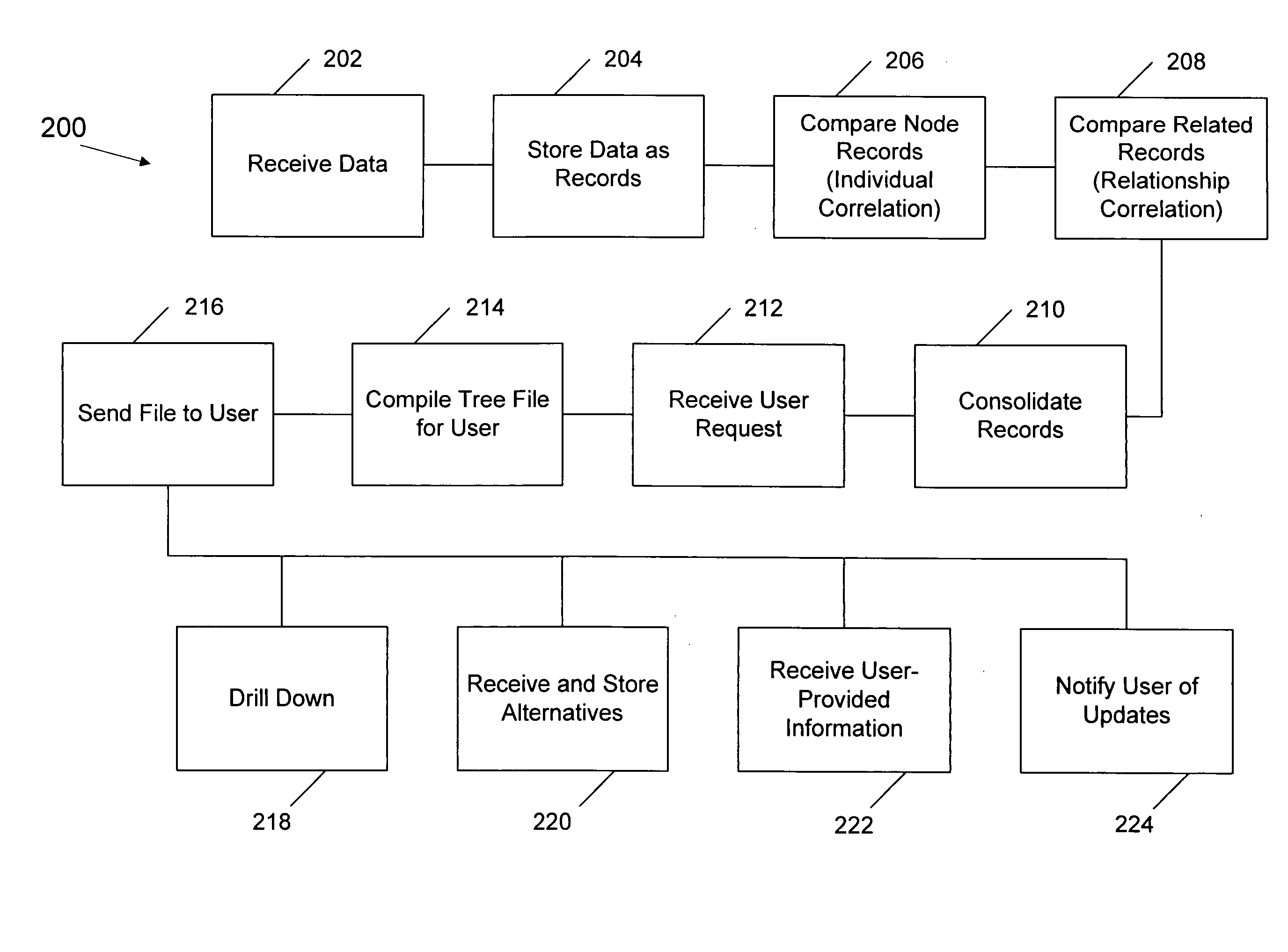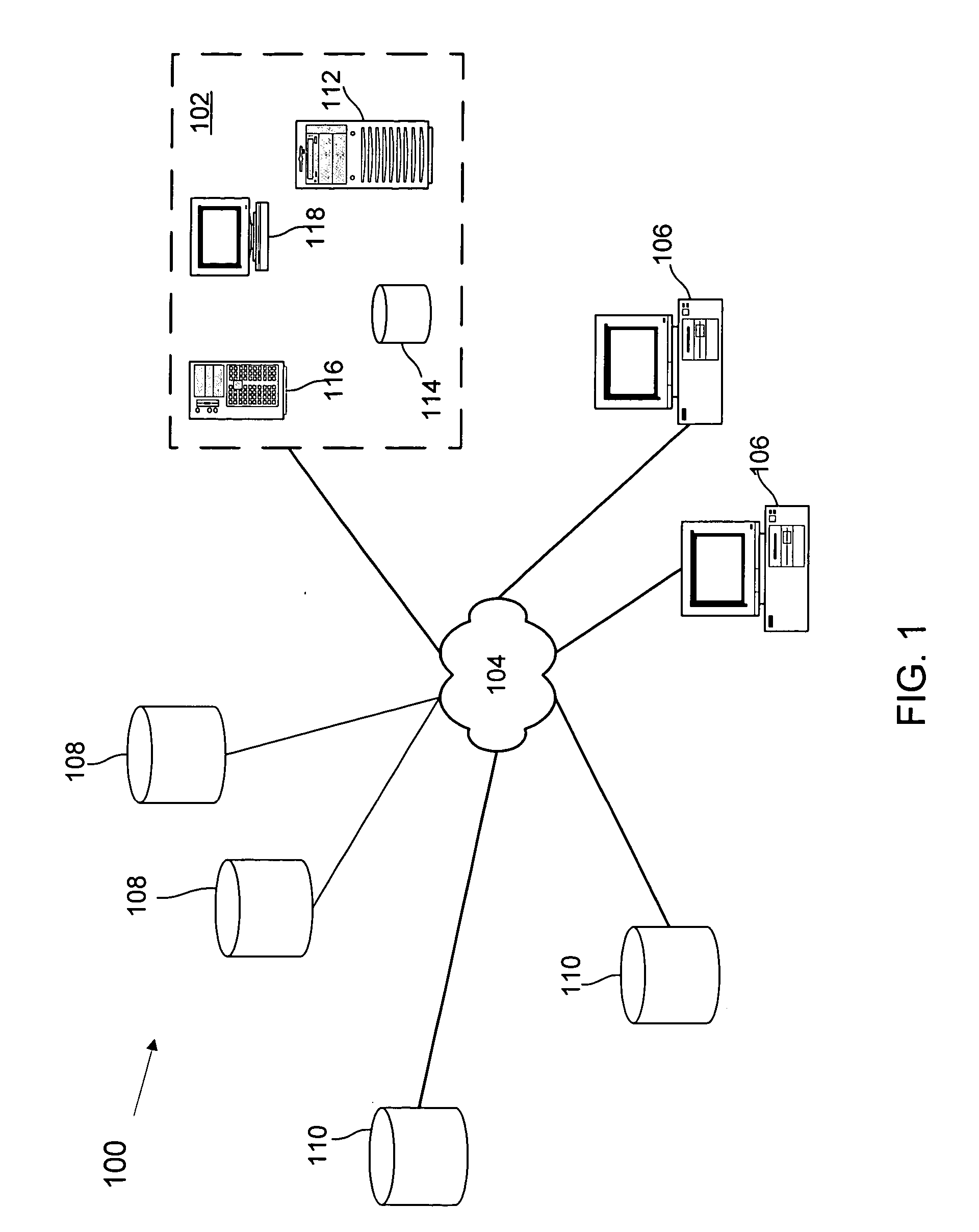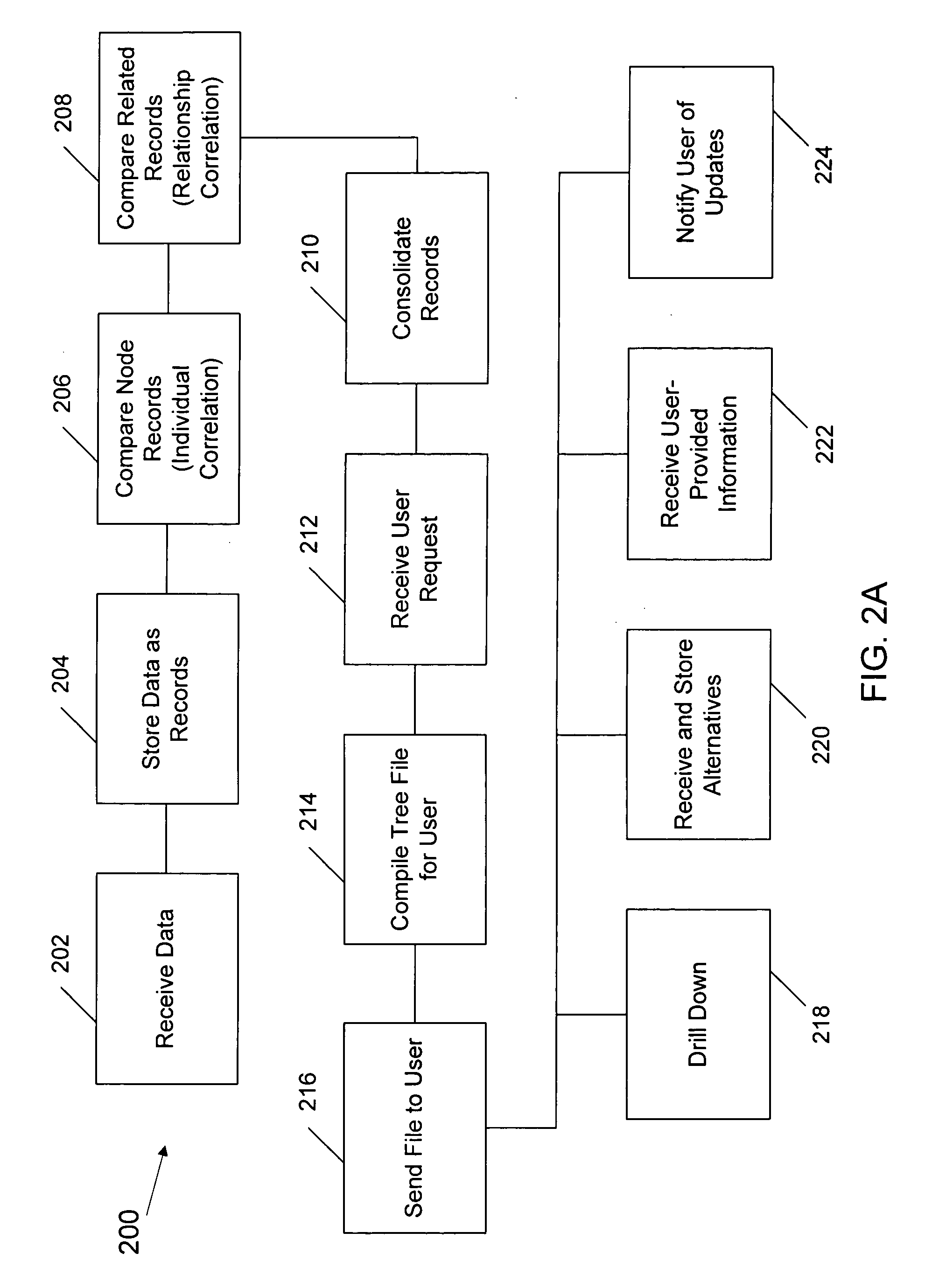[0008] Embodiments of the present invention thus provide a method of creating a family tree. The method includes receiving genealogy data at a host computing system from at least one primary source and creating one or more node records and one or more link records using the genealogy data. The individual node records include at least name data and each individual link record includes relationship data that represents a relationship between individual node records. The method also includes comparing individual node records and identifying pairs of records having similar data. For each identified pair of individual node records, the method includes comparing related individual node records and deciding based on predetermined criteria whether the identified pair of individual node records represent the same person. The method also includes consolidating the information from a plurality of records determined to represent the same person into a single person record. The method also includes receiving a request at the host computing system from a user computer to display a family tree and using the individual link records, the individual node records, and the single person records to create a data representation comprising the requested family tree. The method also includes sending the data representation to the user computer.
[0009] In some embodiments, the method includes using the genealogy data to create surname records. A surname record may include a surname and a number representing the number of times the corresponding surname is encountered in the genealogy data. The method may include using the surname records to partition the individual node records into groups prior to comparing the individual node records. Comparing individual node records and identifying pairs of records having similar names may include calculating a score representing the likelihood that the identified pair of individual node records represent the same person. Comparing related individual node records and deciding based on predetermined criteria whether the identified pair of individual node records represent the same person may include revising the score based on the comparison. The individual node records may span only a single generation or may span multiple generations. Receiving genealogy data from at least one source may include receiving genealogy data from a source such as the Ancestry World Tree system, a Social Security Death Index database, the World Family Tree system, a birth certificate database, a death certificate database, a marriage certificate database, an adoption database, a draft registration database, a veterans database, a military database, a property records database, a census database, a voter registration database, a phone database, an address database, a newspaper database, an immigration database, a family history records database, a local history records database, a business registration database, a motor vehicle database, and the like. Receiving genealogy data from at least one source may include receiving genealogy data as a GEDCOM file. Using the individual link records, the individual node records, and the single person records to create a file comprising the requested family tree may include including alternatives for relationships for display to a user, in which case the method may include receiving a selection representing a user choice among the alternatives, using the selection to update the family tree, and storing the selection. In some embodiments the method includes receiving new information that changes the family tree and providing the user an opportunity to revise the selection. The method may include receiving information from a user. The information may include a digital picture, a text file, genealogy data, a user-entered text file, a sound file, a video file, any computer readable file, and the like, and storing the information. The information may be available to other users. The method may include receiving additional genealogy data that changes the family subsequent to sending the file to the user computer and notifying the user of the changes. Notifying the user may include sending the user an email, sending a file to the user upon the user accessing the host computing system, wherein the file comprises alternatives, displaying a notification to the user upon the user accessing the host computing system, and the like. The method may include receiving a request from the user computer to send more detailed information relating to the family tree subsequent to sending the file to the user computer, using the individual link records, the individual node records, and the single person records, to compile the more detailed information, and sending the more detailed information to the user computer.
[0010] In other embodiments the present invention provides a system for creating a family tree. The system includes a host computing system that includes means for receiving genealogy data from at least one primary source and means for sending information to a user computer. The host computer system is programmed to create one or more node records and one or more link records from received genealogy data. The individual node records include at least name data and each individual link record includes relationship data that represents a relationship between individual node records. The host computer system is also programmed to compare individual node records and identify pairs of records having similar data and for each identified pair of individual node records, compare related individual node records and decide based on predetermined criteria whether the identified pair of individual node records represent the same person. The host computer system is further programmed to consolidate the information from a plurality of records determined to represent the same person into a single person record and respond to a request from a user computer to display a family tree by using the individual link records, the individual node records, and the single person records to create a data representation comprising the requested family tree. The host computer is also programmed to send the data representation to the user computer.
[0011] In still other embodiments the present invention provides a method of creating a family tree that includes receiving data at a host computer system that defines a plurality of personas. The data includes one or more assertions for each persona and each persona represents a person. The method also includes storing each persona as a persona record and receiving a request at the host computer system from a user to provide a family tree. The request includes at least one assertion. The method also includes identifying an initial persona record and from the initial persona record, performing a relationship analysis to infer any relationships with other persona records using the assertions of the initial persona record and the other persona records. If a relationship is inferred, at least one relationship type is assigned to the relationship between the records. The method also includes using the persona records and the relationship types to construct a family tree and sending a file comprising at least a portion of the family tree to the user.
[0012] In still other embodiments the present invention provides a system for creating a family tree. The system includes a host computer system that is configured to receive data that defines a plurality of personas. The data includes one or more assertions for each persona and each persona represents a person. The host computer system is further configured to store each persona as a persona record and perform a relationship analysis to infer relationships among persona records using the assertions of the persona records. If a relationship is inferred, at least one relationship type is assigned to the relationship between the records. The host computer system is further configured to use the persona records and the relationship types to construct a family tree, receive a request from a user to provide a family tree, and send a file comprising at least a portion of the family tree to the user.
 Login to View More
Login to View More  Login to View More
Login to View More 


